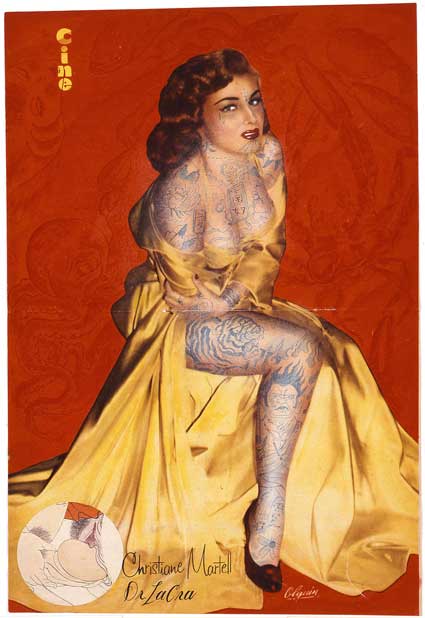
The name — Dr. Lakra — conjures up images of a B-movie mad scientist. The art may be even stranger. Vintage Mexican magazine pinups and luchador photo spreads are the canvas for Dr. Lakra’s dense web of symbols and provocations.
In person, however, the tattoo artist born Jerónimo López Ramírez is small and soft-spoken as he banters with the crew helping him paint a wall-size mural for his first American solo show, “Dr. Lakra,’’ at the Institute of Contemporary Art.

“I was fascinated by the idea of having a permanent drawing on the body,’’ Lakra, 38, said over sandwiches in an ICA conference room. “It was like making a ritual or something, so I was fascinated with this at 16 or 17.’’

The son of Mexican-born painter Francisco Toledo, Lakra had studied with artist Gabriel Orozco and was thinking of becoming a comic book artist, until a new idea took shape.

Learn he did, and his reputation as a tattoo artist grew rapidly in the 1990s. The “Dr.’’ in his name came from his habit of carrying tattoo equipment in a black bag. The ICA’s press kit says “lakra’’ is slang for “delinquent,’’ but it can also mean “scar’’ or “scum,’’ the residue of something nasty — a meaning the artist endorses with a rare laugh.

With tattoos, you have to please the customer. Painting freed him to follow his imagination, with the help of the vintage magazines he’d been casually collecting since he was a teen. And he quickly found success. His paintings are now in the collection of the Museum of Modern Art and have been shown at London’s Tate Modern and elsewhere. He has traveled extensively exploring tattoo culture, and his paintings may reference the body art of the Maori people or pre-Columbian images.

The retro images from vintage magazines, Alonzo said, hark back to an era when society was much more rigid. “Him using tattooing and the stigma associated with it on those figures, who would at that time never have had a tattoo, that is really challenging the nostalgia for that brilliant bygone era, and that is brilliant,’’ Alonzo said.



interview source
No comments:
Post a Comment